This has been quite an odd year in the garden, and though I suppose that every year has its oddities, this one has had a disproportionate number. Record snow, followed by record heat caused some plants to bloom early, others late. Toss the late summer drought into the mix, and many of the late summer bloomers have been delayed. But following the recent rains, wonderful!
In many years the perennial sunflowers (Helianthus, above) will be at their peak early in September, but they have only opened into full bloom in my garden the last week of the month, so there should be bright yellow blooms until the first frost (with luck until the end of October). Perennial sunflowers are distinguished from the annual types by significantly smaller, but more numerous flowers, and by a more compact growing habit. Though some will grow to six feet and taller, most perennial varieties are shorter and bushier, and there will be many dozens of blooms on an established plant. ‘Low Down’ (below) grows only a foot tall, and covered in dark eyed yellow blooms, it’s easier to fit into the garden with its more compact growth. All the sunflowers are dependable in poor, dry soils, and in baking sun.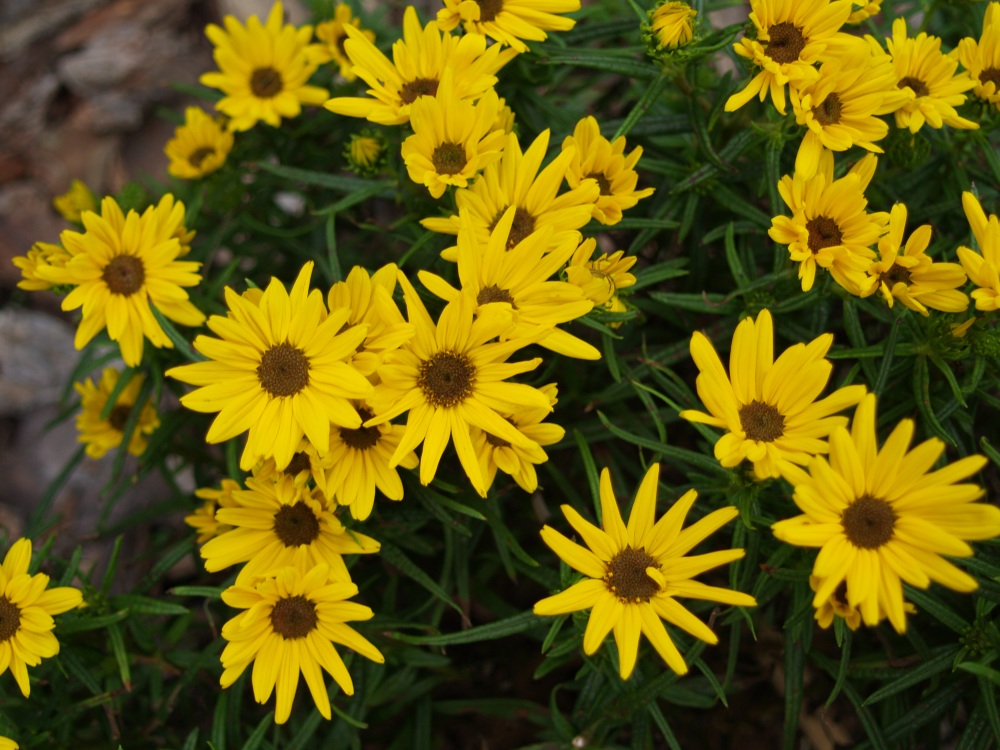
The fall blooming asters range from knee’s height to over your head, and most are blooming now. In recent weeks I have learned to appreciate the tall Tatarian daisy (Aster tataricus ‘Jindai’, below) from a distance since the small blooms are swarming with every type of bee, not just gentle bumblebees. 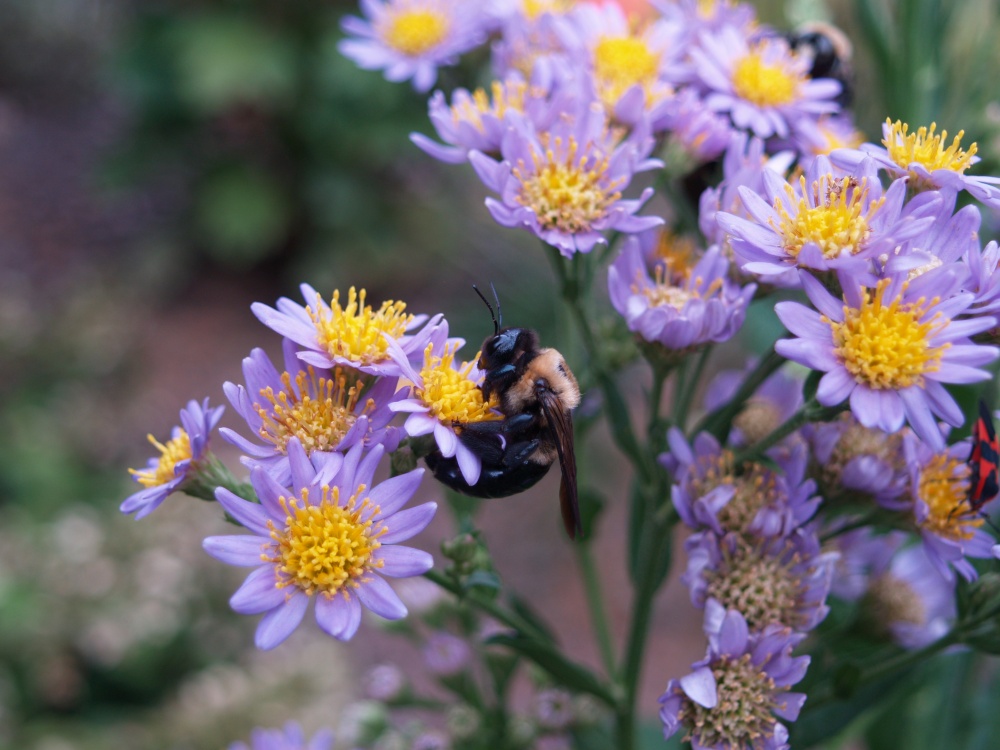
Goldenrod (Solidago, below) remains in full bloom since early in September, with arching stems covered in yellow. The compact growing ‘Fireworks’ is an excellent choice for late summer and early autumn flowers, and goldenrod is not the source of pollen that irritates so many people (ragweed is the true culprit).
Joe Pye Weed (Eupatorium ‘Chocolate’, below) suffers with a name that identifies it as problem, not as a fine late season perennial that attracts butterflies by the score. There are cultivars that grow taller than six feet, but many are more compact, and Chocolate has attractive foliage and a very unweed-like manner, except that it will seed itself about a bit. 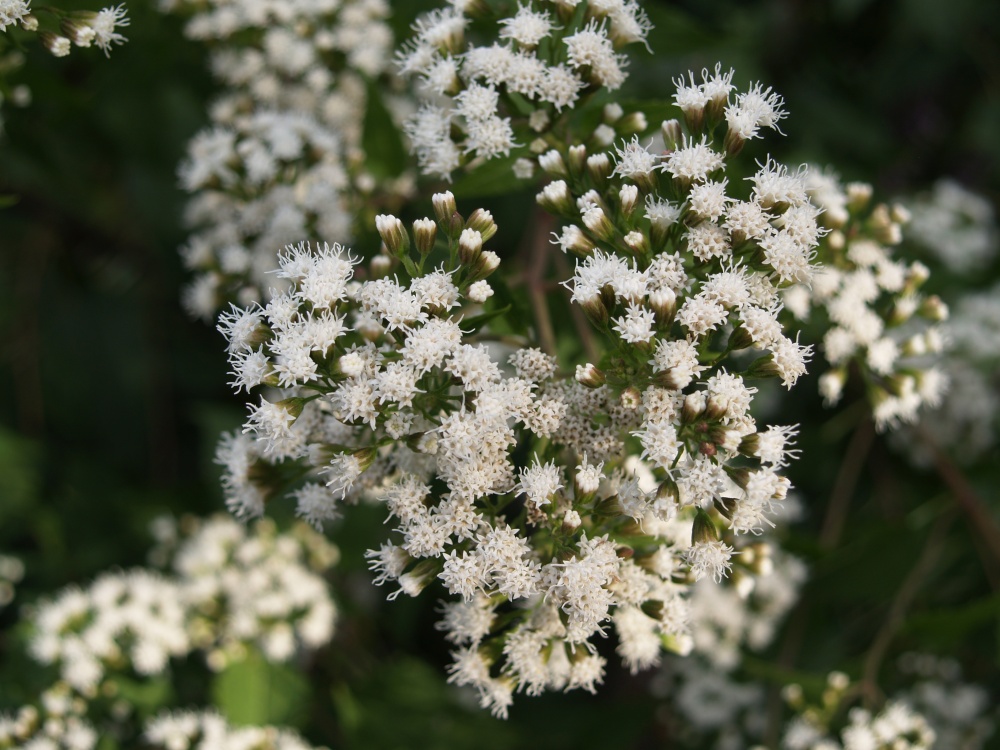
The Japanese windflowers (Anemone ‘September Charm’, below) were quite late to bud this year, and in early October have not reached full bloom. The white blooming ‘Whirlwind’ grew taller than is usual, while pink September Charm is shorter.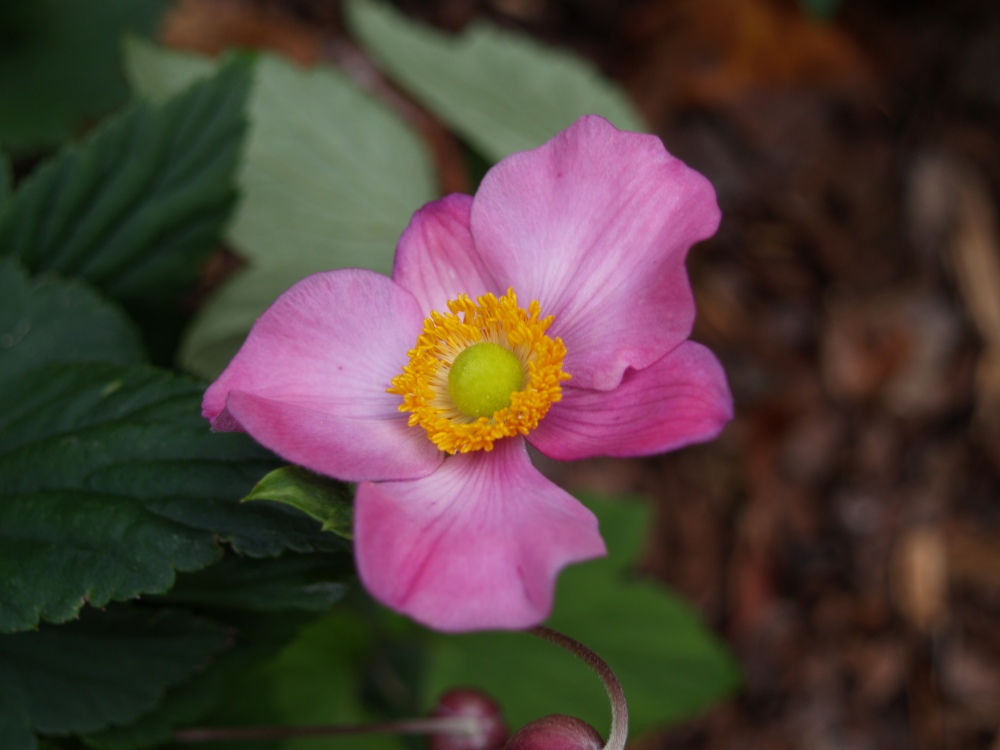
There are a handful of toad lily (Tricyrtis, below) cultivars in the garden, and only one bloomed early in August, with the others just coming into bloom in late September. Today they are fully in bloom, and I’ve no doubt that they will be blooming through October unless there is a dreadful freeze.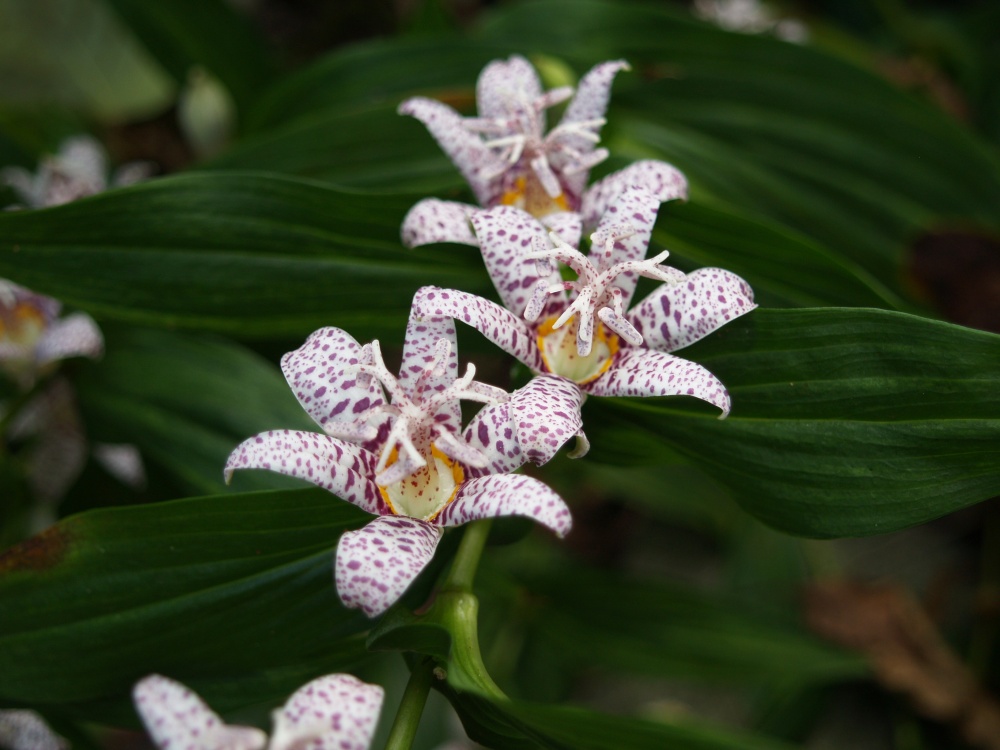
The foliage of the leadworts (Ceratostigma plumbaginoides, below) has not begun to turn red yet, but with the recent cooler temperatures the wait shouldn’t be long. They have bloomed through the summer, but more abundantly with cooler temperatures, and will continue until frost.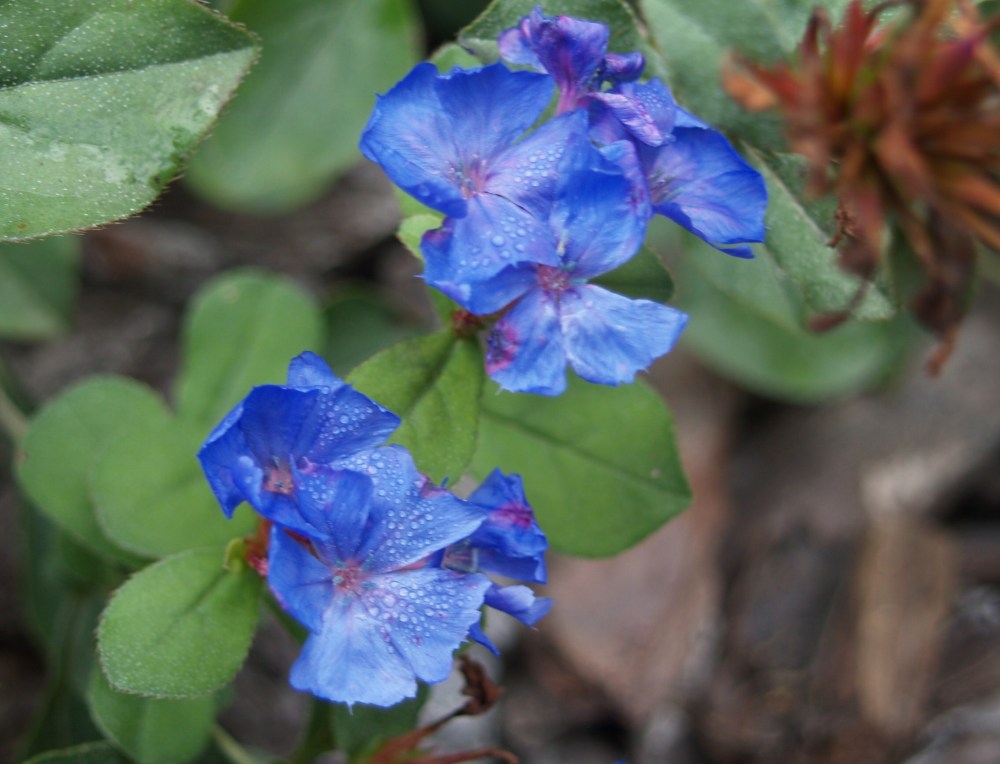
Sedum Autumn Joy (below) is colorful for many weeks in late summer, and in early October the flowers deepen to a coppery-red. Autumn Joy and the newer Autumn Fire are dependable in nearly any circumstance except shade and wet ground, and should not be overlooked for blooms in the early autumn garden.
Hi Dave,
I have just bought an elephant ear plant for my house (indoor). This morning we found water dripping from the leaves of the plant. I read that you had same situation when moving the plant indoor for the winter. Did the water drips cause permanent stain on the wooden floor? Do you know if the leaves is dripping water because I have watered it too much?
Cheers,
Aiwee
I’m sorry, this is a sore subject in our household. Elephant ears have been banished to the basement for overwintering where they won’t drip onto the hardwood floors. This seems to be a persistent and unavoidable problem, but I barely water them so that’s not the problem. I don’t know the cause of the droplets, but there doesn’t seem to be any way to stop them. The hardwood flowers in our family room now have little black “character” stains.
Thanks for sharing. I guess I’ll have to move it outdoor until it’s absolutely necessary to come indoor, just before freezing?